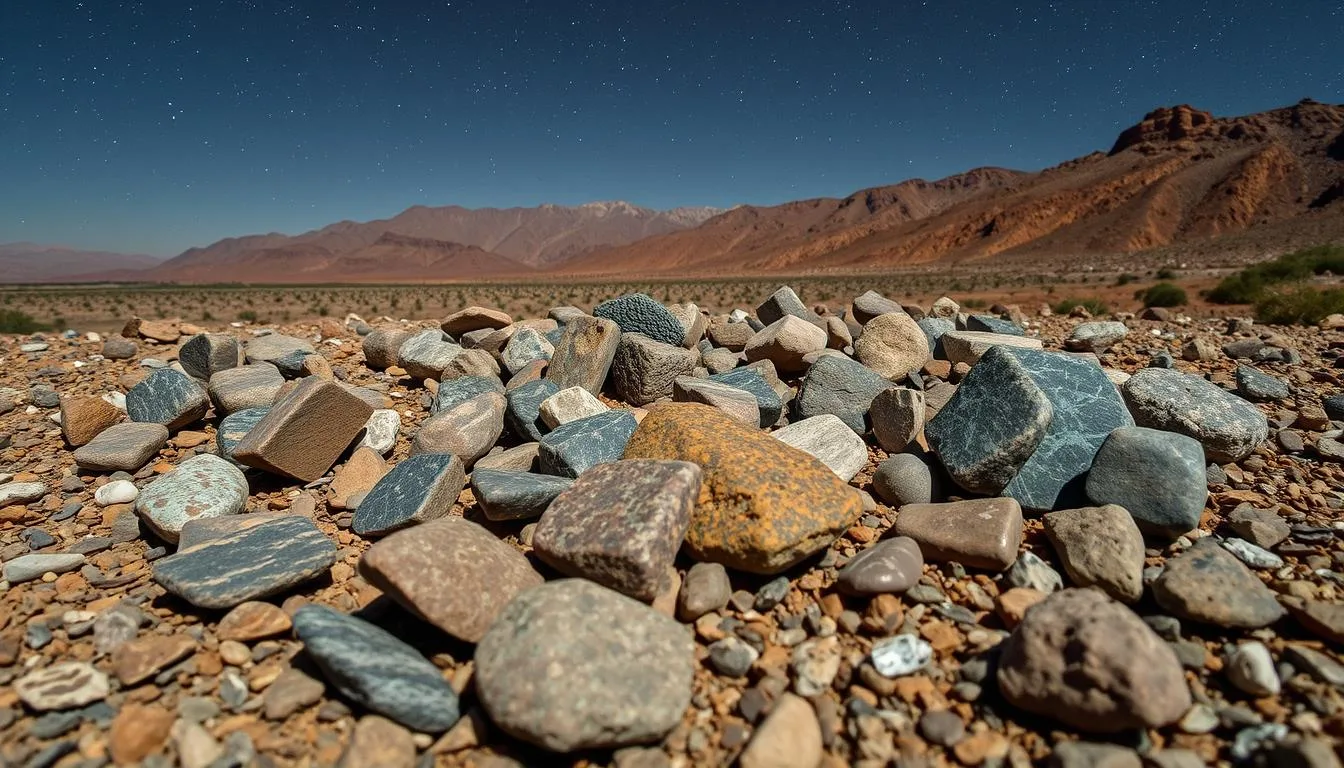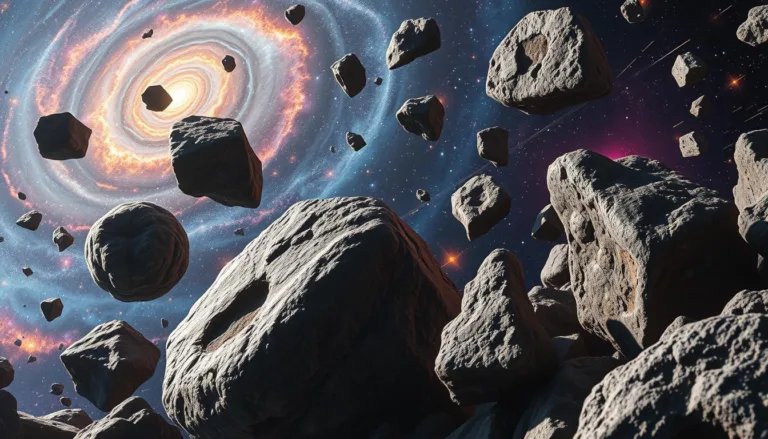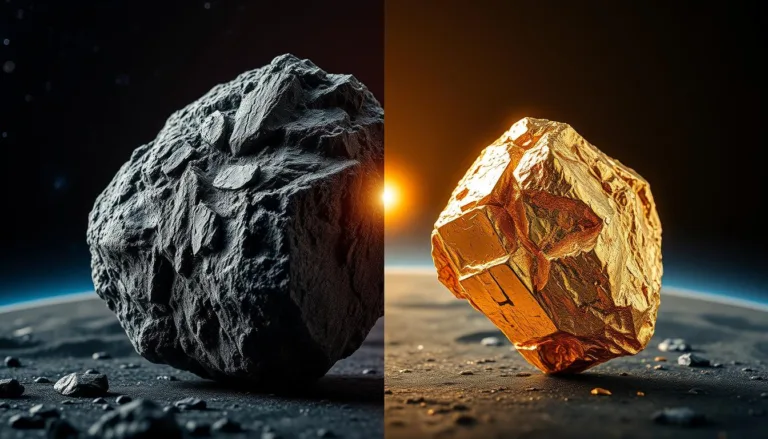In the Atlas Mountains of Morocco, a treasure trove of space rocks awaits. These rocks, known as Atlas meteorites, fascinate scientists and space fans globally. They offer a glimpse into our solar system’s past. These meteorites come from far away, linking us to the planets that once orbited our sun.
The Atlas Mountains are perfect for finding these rare space rocks. Their harsh terrain and dry climate make it easier to spot them. Thanks to the hard work of meteorite hunters, we have a collection of these cosmic wonders. Each one has its own story to share.
Key Takeaways
- Atlas meteorites are an extraordinary collection of space rocks found in the Atlas Mountains of Morocco.
- These meteorites offer a unique window into the history of our solar system, providing valuable insights into the formation and evolution of planets.
- The Atlas Mountains’ geological features and arid climate have made the region a prime location for discovering these cosmic fragments.
- Meteorite hunters have been instrumental in uncovering the Atlas meteorites, which have captured the attention of scientists and enthusiasts worldwide.
- Understanding the origin, composition, and age of these space rocks is crucial for advancing our knowledge of the universe.
Understanding Atlas Meteorites: A Gateway to Cosmic History
The Atlas Mountains in Morocco are filled with cosmic wonders – the Atlas meteorites. These ancient rocks give us a peek into our solar system’s early days. They show us how our celestial neighborhood came to be.
Formation and Origins in the Atlas Mountains
The Atlas Mountains are known for their rugged terrain and complex geology. Over time, many meteorites have fallen here, embedding themselves in the land. The dry climate of the Atlas region has helped keep these astrogeology samples intact, making them crucial for science.
Geological Significance of Moroccan Space Rocks
Meteorites from Morocco, like those from the Atlas Mountains, are key to understanding our solar system’s early days. They reveal the primordial elements and cosmic impacts that formed our planets and moons.
Chemical Composition and Age Dating
Scientists study the chemical makeup and age of Atlas meteorites to learn about our solar system’s history. Techniques like mass spectrometry and radiometric dating help figure out their chemical composition and age. This information is vital for understanding the cosmic impacts and astrogeology samples that have shaped our universe.
The Atlas Mountains in Morocco are a treasure trove for scientists and space enthusiasts. They offer a glimpse into the primordial elements and cosmic history of our solar system. By examining these astrogeology samples, researchers are uncovering the secrets of our celestial past, one meteorite at a time.
Types and Classification of Atlas Mountain Space Rocks
The Atlas Mountains of Morocco are a treasure trove for meteorite lovers and scientists. They have three main types of space rocks: chondrites, iron meteorites, and rare Martian and lunar specimens. Each type gives us clues about the history of our solar system.
Chondrites and Their Characteristics
Chondrites are the most common meteorites. They have chondrules, which are round silicate inclusions from the early solar system. These ancient pieces of asteroids tell us about the early days of our planets. Chondrites from the Atlas Mountains show a wide range of types, each with its own special features and chemical makeup.
Iron Meteorites from the Region
The Atlas Mountains also have a lot of iron meteorites. These are dense, metal-rich rocks that come from the cores of broken asteroids. Studying these meteorites helps us understand how planets and other bodies are formed.
Rare Martian and Lunar Specimens
The Atlas Mountains are also home to rare Martian and lunar meteorites. These rocks were blasted off from Mars and the Moon by asteroid impacts. They are very rare, but studying them lets us learn about our closest neighbors in space.
| Meteorite Type | Characteristics | Prevalence in Atlas Mountains |
|---|---|---|
| Chondrites | Contain chondrules, offer insights into early solar system | Most abundant type |
| Iron Meteorites | Dense, metal-rich, provide information on asteroid interiors | Significant collection |
| Martian and Lunar Meteorites | Rare specimens, offer glimpse into neighboring planetary bodies | Extremely rare finds |
The Atlas Mountains of Morocco are key for studying asteroid fragments and their role in our solar system’s evolution. Each type of meteorite offers new insights into the universe.

Scientific Value and Research Applications
Atlas meteorites are amazing space rocks from Morocco’s Atlas Mountains. They are very important for science and help us learn new things. These astromineralogy specimens show us how our solar system started and changed over time.
Scientists study Atlas meteorites to learn about the extraterrestrial materials from long ago. By looking at their makeup, age, and minerals, they can figure out what happened a long time ago. This helps us understand how planets and moons formed and where life might have started.
- Atlas meteorites let us see how the solar system began, with pieces from the start still inside.
- Scientists are excited about Martian and lunar samples found in the Atlas Mountains. They give us clues about other planets.
- Research on Atlas meteorites also helps us learn more about Earth’s history. It gives us new views on our planet’s past.
Atlas meteorites are not just interesting rocks. They help us make new discoveries in materials science, planetary science, and even searching for alien life. As we keep studying these extraterrestrial materials, we might find even more amazing things.
“Atlas meteorites are not just fascinating space rocks – they are windows into the past, offering us a chance to unravel the mysteries of our solar system’s formation and the potential for life beyond Earth.”
Collecting and Authenticating Atlas Meteorites
Collectors and researchers are on the lookout for rare space rocks, especially the Atlas meteorites found in Morocco. It’s important to prove these rocks are real. Scientists use special methods to check their authenticity and value.
Authentication Methods and Procedures
Verifying Atlas meteorites involves thorough testing and analysis. This includes checking their chemical makeup, examining them under a microscope, and comparing them to other meteorites. Advanced tools like X-ray diffraction and mass spectrometry help confirm they come from space.
Legal Considerations and Export Rules
Buying Atlas meteorites comes with legal hurdles. Morocco, where they’re found, has strict rules to protect its natural treasures. Buyers need the right documents and must follow local laws. This ensures they can own and transport these rare items legally.
Preservation Techniques for Collectors
Keeping Atlas meteorites in good condition is a big responsibility. Collectors and researchers must handle them carefully. They use special storage and display methods to protect these valuable pieces of the universe.







